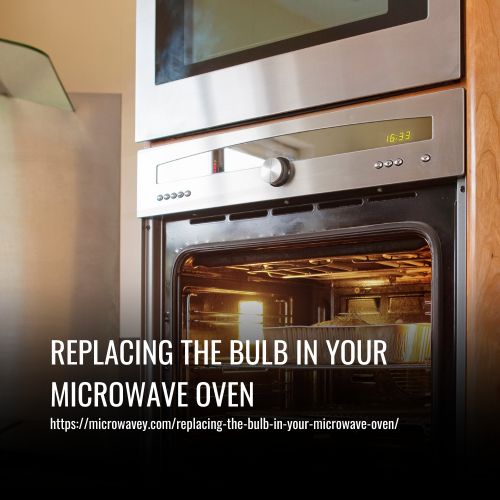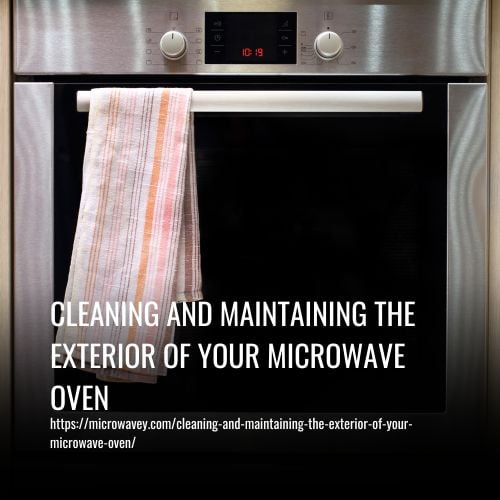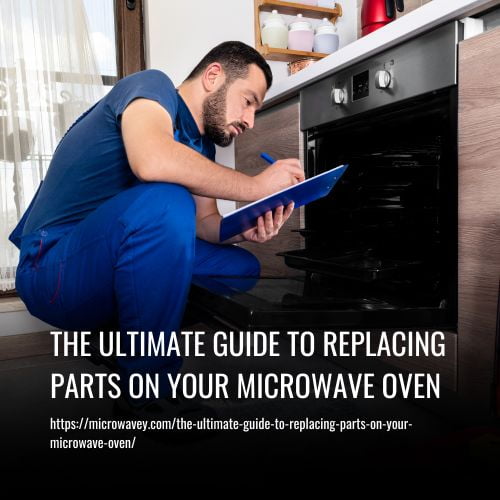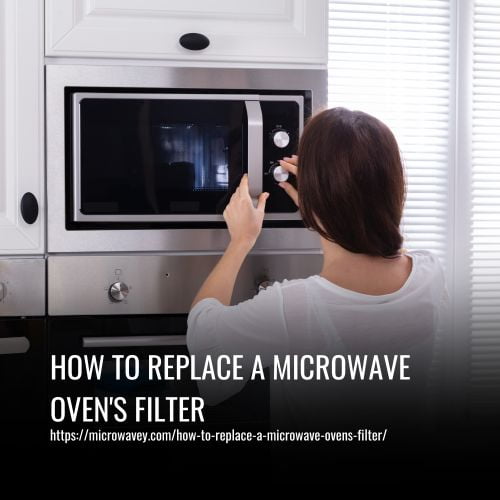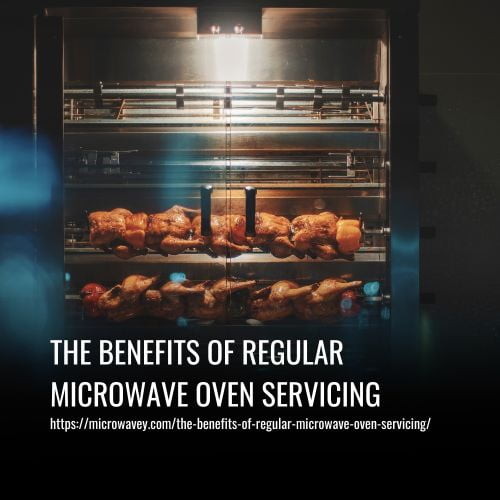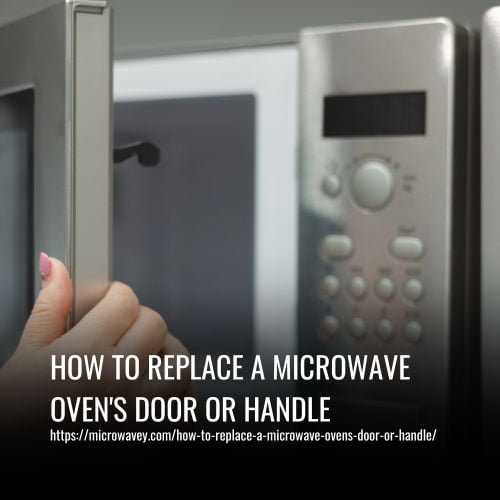How to Fix a Microwave Door: Common Issues and Solutions
To fix a microwave door, the best option is to try and remove the door by taking out the screws and pieces holding it together. If that doesn’t work, it is a good idea to inspect the other parts related to the door or opening/closing the microwave and make sure they are in good condition.
Microwaves have doors to contain the heat and radiation during the cooking process, and to protect users from potential harm. Common issues with microwave doors include misalignment, difficulty in opening or closing, or damage to the hinges or latches.
To fix a misaligned door, the hinges and latches can be adjusted or replaced. If the door is not opening or closing properly, the hinges, latches, or springs may need to be repaired or replaced. If there is visible damage to the door itself, it may need to be replaced.
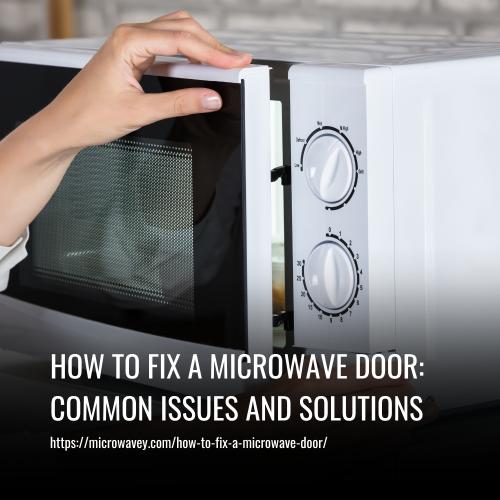
Why do Microwaves Have Doors?
Microwaves have doors for safety reasons. The door is essential for containing the microwaves inside the microwave and focusing the energy on the food being heated. Without the door, the microwaves could leak out and potentially cause harm to people and their health. The door also prevents any spills and bubbling liquid from escaping, keeping the inside of the microwave clean.
Additionally, the door provides a safe place to store warm foods, keeping children and animals away from potentially harmful items. Ultimately, the presence of a door on a microwave is necessary to ensure the safety of a household and living space. Removing the door is not a wise shortcut, as it compromises the safety and functionality of the microwave.
What Kind of Doors do Microwaves Have?
Microwaves can have three main types of doors: manual, push button, and touch button. Manual doors, found in older models, have a handle that people pull to open or push to close and are typically held shut by a latch. These models tend to be the cheapest but also more prone to breaking. Push button doors can only be opened by pressing a button, which unlocks the latch and shuts off the microwave.
1. Check the door latch:
To check the door latch on your microwave, first try to open the door. If the door doesn’t open easily, gently pull the door handle to see if the latch will disconnect, allowing the door to open. If the door opens, check that nothing is stuck in the latch area, and if there is, remove it. If the latch is broken, it will need to be replaced.
If the door doesn’t open at all, the door button might be the cause, so you can move on to checking that component. The door latch is essential for ensuring that the microwave door can close properly when in use, so it’s important to address any issues with it to keep your microwave functioning correctly.
2. Check the door button:
To check if the door button is faulty, start by pressing it to see if there is any resistance. If you can easily press the button without any resistance, the door button is faulty and will need to be repaired or replaced. If there is resistance and you hear a clicking sound, the door switch may have become loose from the door mechanism.
If there is resistance and no clicking sound, switch the microwave power off and remove the door button to check if it is properly connected to the door mechanism and if any parts are broken. If the door button is damaged, it will need to be replaced. If you are not experienced in repairing microwaves, it is recommended to take it to a qualified technician for repair.
3. Check the door latch lever:
To check the door latch lever on your microwave, start by switching off the power to the microwave for safety. Then, remove the control panel to access the door latch lever. If you’re unsure how to do this, consult your user manual or seek the help of a qualified technician.
Once you have access to the lever, inspect it for any damage or obstructions. If the lever is stuck, remove anything obstructing it and check if it’s functioning properly. If it is, reassemble your microwave and ensure the door is working correctly. If the lever is broken, it will need to be replaced.
If your microwave still isn’t working after repairing or replacing the lever, then the next component in the guide should be checked. Remember, working on microwaves can be dangerous, so it’s important to exercise caution and seek professional help if needed.
4. Check the door springs and hinges:
To check the door springs and hinges on your microwave, start by switching off the power to the appliance. Then, remove the microwave door by loosening the hinges. If you’re unsure how to do this, refer to your user manual or consider seeking help from a qualified technician.
Once the door is off, inspect the hinges and springs for any signs of damage. If you find any damage, these components will need to be replaced. If the hinges and springs appear undamaged, it’s best to take your microwave to a repair shop for a professional inspection to identify the cause of the problem.
These components are important for the proper functioning of the microwave door, and if they are defective, the door may become loose or fail to work altogether. Always prioritize safety when working on microwaves and seek professional assistance if needed.
What are Common Issues That Cause Microwave Doors to Break?
Microwave doors can break due to various issues such as improper maintenance, rusting, food buildup, and incorrect assembly. To prevent these, it is important to close the door when not in use, avoid overcooking or leaving the door open too long, and clean the microwave regularly.
When cooking, follow the recommended times and start with shorter durations for items without specific guidelines, adding more time as needed. Rust can be prevented by leaving the door open after cooking meals with high moisture content. It is important to clean the microwave regularly to reduce food buildup.
Additionally, it is best to follow the owner’s manual when assembling the microwave to avoid any potential issues. By taking these precautionary measures, the likelihood of the microwave door breaking can be significantly reduced.
What Tools are Available and Recommended for Microwave Repair?
The recommended tools for microwave repair include a multimeter, Phillips and Standard head screwdrivers, a cordless drill, needle nose pliers, wire cutters, a crescent wrench, a flashlight, and a putty knife. A multimeter helps in measuring electrical output and is essential for diagnosing electrical circuit or board malfunctions.
The Phillips and Standard head screwdrivers are necessary for unscrewing the microwave without damaging the screws. A cordless drill is multipurpose and useful for various home repairs. Needle nose pliers provide a better grip for smaller pieces and screws, and wire cutters are essential for cutting faulty wiring. A crescent wrench is needed for handling hexagon-shaped bolts and nuts during disassembly.
A flashlight is helpful in dimly lit areas, while a putty knife is used to pop off metal pieces during the repair process. These tools are handy to have for not only microwave repair but also for general household repairs and maintenance.
How to Fix a Microwave Door Explained in Depth?
To fix a microwave door that is stuck closed, the first step is to check for any obstructions in the door latch or hinges. Clean and remove any debris, and lubricate the moving parts if necessary. If the door still won’t open, the door switch or latch assembly may need to be replaced.
If the microwave door is unable to close, check for any damaged or misaligned door hinges, and replace them if necessary. Ensure that the door seals properly and adjust or replace the door gasket if it is worn out. Also, check for any broken or worn-out door latch components and replace them as needed.
When dealing with a microwave door that is not latching properly, inspect the latch assembly and door alignment to ensure everything is in working order. If necessary, adjust or replace the latch assembly, and check for any faulty interlock switches that may be preventing the door from closing properly.
My Microwave Door Won’t Close.
If your microwave door won’t close, there are a few potential reasons. The hinges may be dirty or in bad repair, in which case they should be removed, cleaned, and replaced. Another common issue is broken springs, which can be removed by taking off the door, unscrewing the panel, and replacing the broken springs. If the latch is broken, it can be unscrewed from the door and replaced.
These steps should resolve the most common issues with microwave doors not closing. Other potential issues to consider include misalignment of the door, overheating, circuit failure, a faulty door button, a bad seal, a malfunctioning magnet, or the need to unplug and plug in the microwave again.
My Microwave Door Won’t Open.
If your microwave door won’t open, there are a few common issues that may be causing the problem. First, putting too much food or liquid in the microwave can lead to excess moisture that may interfere with the electronics.
Additionally, latch issues, such as a stuck or obstructed latch, can also prevent the door from opening. Lastly, an electrical problem caused by a surge or outage may be at fault. To troubleshoot, try unplugging the microwave and checking the circuit breaker.
If you’ve encountered any of these issues, they are a good place to start when trying to determine why your microwave door is refusing to work.
Options for Microwave Repair
If you are unable to fix your microwave using DIY methods or if the repair techniques require skills beyond your comfort level, you can consider hiring a professional. There are various options available, including local or big-name repair companies.
It’s important to thoroughly research and ensure the company is reliable before making a decision. If you are unable to resolve the issue on your own, a professional repairman can assist. In some cases, it may be more cost-effective to simply purchase a new microwave.
How to Fix a Microwave That Will Not Close Properly?
If your microwave door is not closing properly, there are a few steps you can take to try and fix the issue. Here are some tips to help you troubleshoot and repair a microwave that will not close properly:
- Before beginning any inspection or repair, always disconnect the microwave from the power source.
- Inspect the door latch assembly by locating and removing it behind the inner door panel. Look for signs of cracking, wear, damage, or discoloration. Replace the latch assembly if any of these issues are found.
- Check the torsion springs, which are used to keep the microwave door closed on units with doors that open downwards. Remove the door panels to locate the springs at the bottom of the door. Look for signs of wear, corrosion, or damage, and replace the torsion springs if needed.
- Note that properly functioning door latch assembly and torsion springs are essential for the microwave door to latch and close properly.
By following these steps, you can diagnose and repair the issue with your microwave door not closing properly, ensuring that the latch assembly and torsion springs are in good working condition.
Conclusion:
The article provides a step-by-step guide on how to fix a microwave door, which can be extremely helpful for those experiencing issues with their microwave. By following the instructions carefully, readers can save money on professional repairs and avoid the inconvenience of a malfunctioning appliance.
Additionally, fixing the microwave door on your own can give a sense of accomplishment and empowerment. Overall, this article serves as a valuable resource for anyone seeking a cost-effective solution to their microwave door problems.

